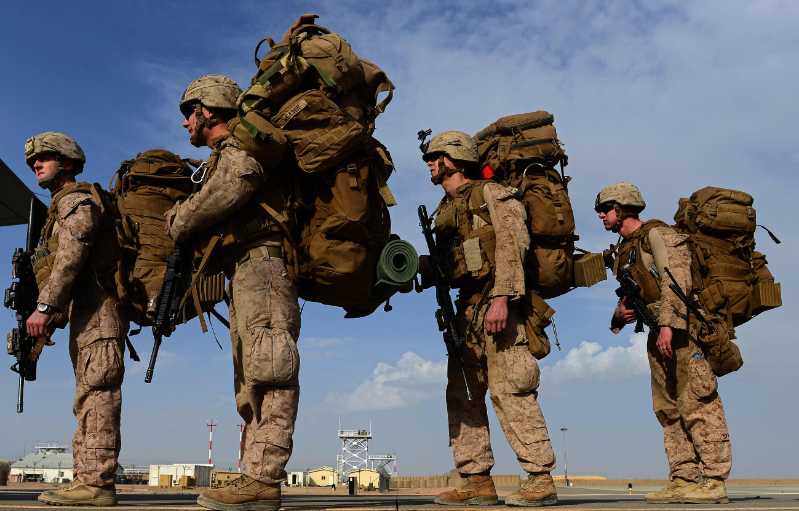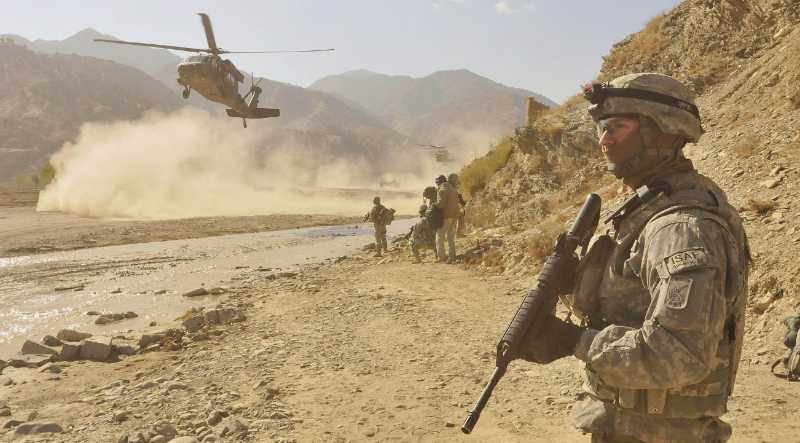At the 13th Zhuhai Air Show, China North Industries Group Corporation Limited displayed a complete system of light weapons, including pistols, automatic rifles, submachine guns, sniper rifles, light machine guns, automatic grenade launchers, etc. Among them, there are both standard models of the latest domestic equipment and models for foreign trade, and the types of new firearms on display are also the most in history. As one of the countries that attaches the most importance to individual combat, China has always been striving for excellence in light weapons. The following is a review and analysis of the light weapons at this air show to explore the development trend of light weapons.

Pistols
Four types of 9mm pistols, 92A, 92B, 193, and 92G, were exhibited at this Zhuhai Air Show. Among them, 92G is an improved version of 92-type pistol. The main improvement is to change the original double-row double-feed magazine to a double-row single-feed magazine. The bullet is more stable during the rising process, which improves the reliability of feeding. At the same time, a Picatinny rail is installed to facilitate the installation of tactical accessories, such as laser indicators and high-intensity lights. 92A, 92B, and 193 are a new generation of pistols with a new design. 92A is a standard type with a magazine capacity of 15 rounds. It is mainly equipped with junior and middle-level commanders. It can also be equipped with armed police forces and public security police, etc., for single-soldier close-range combat. 92B is a compact type with a magazine capacity of 15 rounds. It is mainly equipped with special forces. It can also be equipped with personnel of other military services, armed police special police forces and public security special police, etc., for single-soldier close-range special operations. 193 is a pocket type with a magazine capacity of 7 rounds. It is mainly equipped with senior commanders. It is used for close-range self-defense and kills living targets within 25 meters. The firing mechanism of 193 pistol is different from that of 92A and 92B pistols. The 193 type uses a translational firing pin firing mechanism, while the 92A and 92B types use a hammer rotary firing mechanism.
Rifle
The 191 type 5.8mm automatic rifle: the 192 type 5.8mm short automatic rifle, the 191 type 5.8mm precision rifle and the CS/LR17 type 7.62mm new generation modular gun family were exhibited at this Zhuhai Air Show.
The 191 type automatic rifle is a new generation of rifles with world-leading level in my country. It adopts a retractable buttstock structure with moderate length, light weight, exquisite workmanship, good human-machine efficiency and strong scalability; the bolt is suspended on the upper receiver, which can better adapt to harsh environments such as mud and sand; it is equipped with a bullet counter, which can accurately record the number of bullets fired by the barrel, making it easy to grasp the remaining life of the barrel.
The structural principle of the 192-type short automatic rifle is the same as that of the 191-type automatic rifle. It is a short barrel type, referred to as the 192-type short barrel. It uses new composite materials, is light in weight, comfortable to hold, and has good human-machine efficiency. It is short and powerful, convenient for tank, infantry fighting vehicle, self-propelled artillery crew and logistics support personnel to use for self-defense.
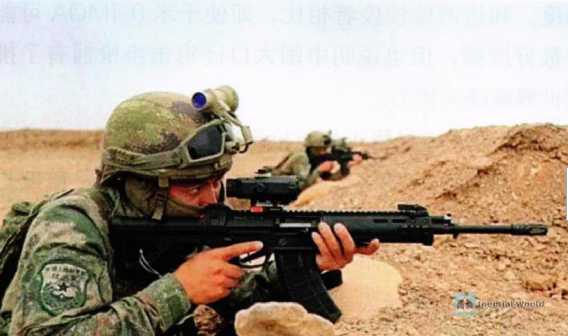
The 191-type precision rifle is a new member of the new generation of guns. The structural principle is the same as that of the automatic rifle. It is equipped with a new optical sight with variable zoom magnification, has more diverse tactical application capabilities, supports fully automatic firing, and can be called the "Chinese version of the IAR rifle". The 191-type precision rifle is equipped with a new variable zoom magnification optical sight, which is more adaptable to combat in long-distance firefights. The optical sight is installed on the Picatinny rail at the upper end of the handguard of the precision rifle. If necessary during wartime, other types of sights can be replaced at any time, such as low-light and thermal imaging sights. There is a tactical interface on the handguard, and different tactical accessories can be installed according to combat needs. The 191 precision rifle can choose different configuration schemes according to different tactical requirements and actual combat needs to complete different combat tasks. When the firing rate needs to be competed in close combat, the 191 precision rifle uses full-automatic shooting, which is a long-barreled automatic rifle. If it is to suppress the enemy’s firepower, the 191 precision rifle can be equipped with a drum magazine and directly transformed into a long-barreled squad machine gun. If it is to shoot at important targets at medium and long distances, the 191 precision rifle is equipped with an optical sight with a variable zoom magnification and uses single-shot shooting, which is a precision marksman rifle. One gun does the work of three guns, and the characteristics of automatic rifles, squad machine guns, and precision rifles are integrated into one. The 191 precision rifle and the US Marine Corps’ M27 IAR rifle are similar in nature.

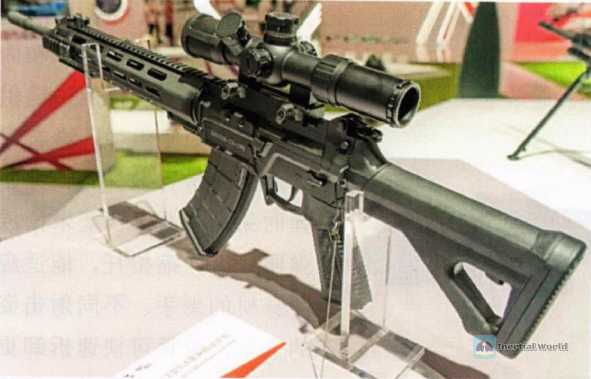
CS/LR17 7.62mm gun family, which is a foreign trade product, includes automatic rifles, short assault rifles and squad light machine guns. It has a very novel appearance, adopts modular design, gas-operated piston short-stroke automatic principle, and retractable folding stock.
Submachine gun
The CS/LS7 9mm submachine gun series was exhibited at this Zhuhai Air Show. It adopts modular design and has four models: fixed stock type, folding stock type, retractable stock type and stockless pocket type. The design concept of CS/LS7 is very similar to the MP5 submachine gun produced by the German Heckler & Koch Weapons Company. From the appearance, the CS/LS7 type 4 submachine gun has the same through-type Picatinny rail as the HK416 automatic rifle, and there is a short Picatinny rail integrally molded with the handguard at the 3, 6, and 9 o’clock positions around the handguard. The position of the bolt handle of this gun is similar to that of the MP5, located in the left front of the gun body. There is also a rail groove reserved on the other side of the same position of the bolt handle, and the position of the bolt handle can be interchanged as needed. The safety is located above the grip of the receiver, and there are indicator marks on both the left and right sides of the same position, so it can also be adjusted according to actual needs or shooter habits. The above two designs highlight the humanized progress of this series of submachine guns. In the future, the CS/LS7 submachine gun and the MP5 submachine gun will be strong competitors in the international military trade market in terms of appearance, performance, and human-machine efficiency.

Sniper rifle
The new generation of domestic sniper rifles were systematically unveiled at this Zhuhai Air Show, including the 203 7.62mm high-precision sniper rifle, the 202 8.6mm high-precision sniper rifle, the 201 12.7mm high-precision sniper rifle and the export-oriented CS/LR13 12.7mm high-precision sniper rifle. The new generation of domestic high-precision sniper rifles adopts a floating barrel and bolt-action design, which greatly improves the shooting accuracy. CCTV disclosed that the dispersion of the CS/LR13 12.7mm high-precision sniper rifle at a distance of 1000 meters is only 11 cm, which means that the accuracy of the sniper rifle at 1000 meters is about 0.4MOA, reaching the international advanced level. According to CheyTac’s official documents, the M200 sniper rifle, which is known as the world’s most accurate, can achieve an accuracy of less than 1 MOA at a distance of 2,270 meters, which means that the dispersion at 2,270 meters does not exceed 65.8 centimeters. The TAC-50 sniper rifle, which holds the world’s longest sniper kill record (in 2017, a Canadian 2nd Joint Special Forces sniper successfully killed an "Islamic State" terrorist at a distance of 3,540 meters), can achieve an accuracy of 0.5 MOA at a distance of 1,000 meters when equipped with high-precision sniper bullets. Compared with these two outstanding rifles, even if 0.4 MOA at 1,000 meters may be the best result, it also shows that China’s large-caliber sniper rifles have the ability to challenge the world’s top.
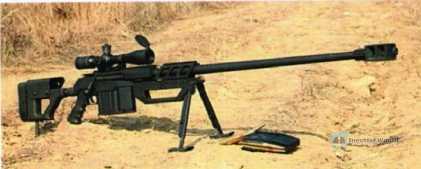


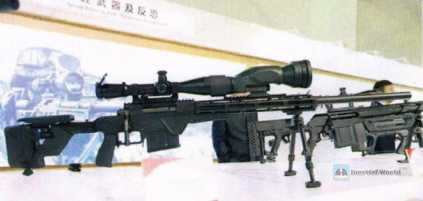

The 201 large-caliber sniper rifle has a long Picatinny rail on the top of the gun body, which can be installed with a high-magnification scope or night vision scope. There is also a Picatinny rail under the front handguard for installing a telescopic bipod. In order to reduce recoil, the sniper rifle uses a hydraulic buffer behind the buttstock and also uses a high-efficiency double-chamber muzzle brake. The buttstock is designed with an adjustable cheek pad and bottom support, and a left-hand grip is integrated, so the shooter can easily adjust the cheek position and shoulder posture. The safety is designed to be operable on both sides, and the position on the left side can be moved by the thumb.
The 203 high-precision sniper rifle has a similar shape to the 201 large-caliber sniper rifle, but its Picatinny rail only has one section on the top of the receiver and one section at the front of the handguard. This section of the handguard rail is used to install a combined night vision sight consisting of a thermal imaging scope and a white light scope. The gun has no muzzle brake, and the buttstock adopts a non-retractable folding design. The cheek pad and shoulder rest can be adjusted. The safety adopts a one-way operation design and is located on the left side. The shooter can adjust it with the thumb.
The 202 high-precision sniper rifle has a similar appearance to the 203. The handguard and rail are basically the same as the 203. The difference is that the buttstock is hollowed out to reduce weight and folds to the right, while the 203 folds to the left. The safety is designed to be operable on both sides. In order to reduce the recoil, a small-sized muzzle brake is also designed for the muzzle
Machine gun
The machine guns exhibited at this Zhuhai Air Show mainly include the 201-type 5.8mm squad machine gun, the 201-type 7.62mm general-purpose machine gun, the CS/LM7.62mm rotary machine gun, the CS/LM12.7mm three-barrel rotary machine gun, and the CS/LM14.5mm three-barrel rotary machine gun.
The 201-type squad machine gun uses a dual-way feeding mechanism. Like the Minimi and Negev machine guns, it can be fed by either a belt or a magazine. The belt feed uses a detachable belt, and the magazine feed uses a 5.8mm gun family magazine. The retractable buttstock can adapt to the needs of shooters of different sizes and different shooting postures. The barrel can be quickly disassembled and replaced. Just open the receiver cover, pull the bolt to the rear, and release the latch to easily remove the barrel, which greatly improves the weapon’s sustained shooting capability. The 201-type squad machine gun is no longer like the 81-type and 95-type squad machine guns in the past. The heavy barrel type of the rifle is more similar to the 201-type general-purpose machine gun. This is a change in combat concepts and an inevitable result of the improvement of the modernization of our army. With the advancement of materials and processes, my country’s light weapons industry can already provide more advanced and more powerful products-the 201-type squad machine gun that uses a belt to feed ammunition is equivalent to the 95-type squad machine gun. And with the improvement of the comprehensive quality of the PLA’s soldiers, mechanization, and air-riding vehicle transportation level, the entire combat system is sufficient to support machine guns with more complex structures and more ammunition consumption. The 201-type general-purpose machine gun has a similar structure to the squad machine gun. It is used as a heavy machine gun with a tripod and as a light machine gun with a bipod.
CS/LM7.62mm rotary machine gun adopts a six-barrel design and has a firing rate of up to 6,000 rounds per minute. It is a medium-caliber rotary machine gun that can be used as an airborne or vehicle-mounted weapon. In the future, it may be installed on the Z-20 to cover special forces operations. Robots and assault vehicles equipped with 7.62mm rotary machine guns were also unveiled at the air show. CS/LM12.7mm rotary machine gun and CS/LM14.5mm rotary machine gun both adopt a three-barrel design and have a firing rate of 3,000 rounds per minute. They are large-caliber rotary machine guns. With their powerful firepower, they can be equipped with advanced thermal imagers, simple fire control systems such as individual radars, and can undertake field air defense tasks. They can also be installed on slightly larger combat robots and armored vehicles to undertake offensive and air defense tasks.

Development trend of light weapons
The light weapons at this Zhuhai Air Show show the development trend of light weapons in recent times.
First, the accessory interface is developing towards standardization. For firearms before the third generation (including) in my country, the connection accessories are connected through dovetail groove interfaces. Although the dovetail groove interface is easy to fix, its biggest disadvantage is that it is not universal. The scope on the automatic rifle cannot be installed on the sniper rifle for use. Most of the light weapons at this air show use the Picatinny tactical rail as the interface for firearm accessories. The Picatinny rail is a NATO standard accessory rail for firearms. It has the advantages of accurate positioning, durability, firmness and good versatility. It is a standardized interface for modern firearm accessories.
Second, firepower strikes are developing towards precision. Rifles and machine guns at the air show have changed the traditional concept of shooting mainly with mechanical sights, and optical sights have become the main aiming method. With the emergence of common optical sights, active infrared sights, laser sights, low-light sights, thermal imaging sights, optoelectronic sighting systems and other sights, the firepower strikes of individual combat weapon systems are constantly developing towards precision. For example, the new generation of high-precision sniper rifle systems are equipped with optoelectronic equipment such as white light sights, thermal imaging sights, high-magnification observation mirrors, and ballistic calculation modules.
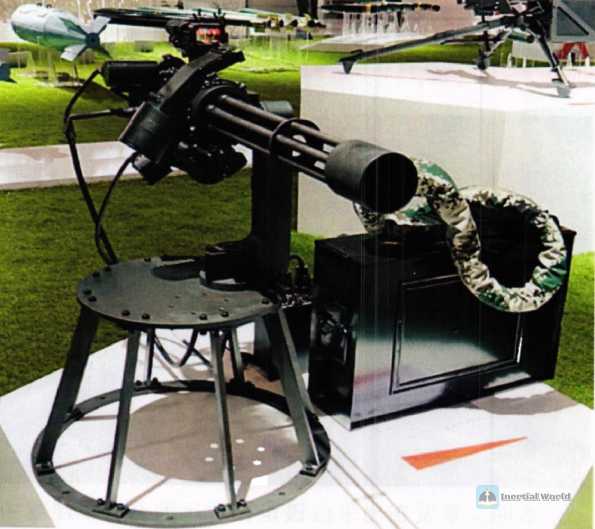
Third, the design of firearms is developing towards modularization. The CS/LS7 submachine gun and CS/LR17 7.62mm gun family at the air show all adopt modular design, representing the future development direction of firearms. The main feature of modularization is that different modules can be selected according to different combat needs to complete different combat tasks. In addition to bringing diversification to firearms functions, modularization can also reduce maintenance costs.
Fourth, combat functions are developing towards multi-purpose. Future combat or counter-terrorism operations require light weapons to be easy to carry, multi-functional, flexible to disassemble and install, and have few faults, so as to minimize carrying and maximize use. When facing different situations, a single weapon cannot achieve the best effect, so the multi-functional function of a gun comes in handy. For example, the 191-type 5.8mm precision rifle can be used as a long-barreled automatic rifle, a squad machine gun, and a precision marksman rifle by replacing different parts, achieving three uses of one gun. For example, the 191-type 5.8mm automatic rifle can be equipped with a gun-mounted grenade launcher to launch lethal grenades, killing and suppressing clustered living targets and firepower points within 400 meters, and damaging light armored targets within 100 meters; it can also fire bullets to kill clustered living targets within 300 meters, suppress enemy firepower points, and damage light armored targets within 120 meters.




